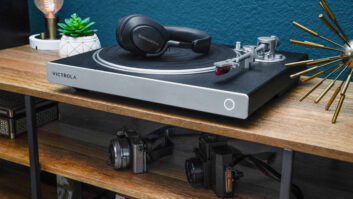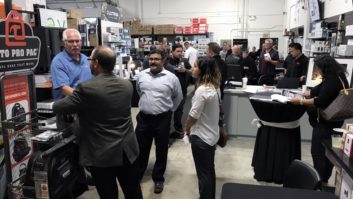As we enter a new decade my big question is this: Are the manufacturers who serve our industry going to continue churning out more of the same old thing, or will we finally see well-engineered solutions based on the real needs of ESCs?
While it is true that, in general, the products we resell to our clients have improved over the last decade or so, I would argue that this is more a matter of normal evolution, rather than any bold technological leadership from the firms that target ESCs as part of their core business.
Televisions, for example, have gone through radical changes and technological improvements, particularly in the last few years. All but gone are the comparisons between plasma and LCD, as either can now deliver a great picture. It is now the norm rather than the exception for even moderately priced video displays to offer 1080p resolution, and while resolution is up, depth, weight, and power consumption are down. Replacing an array of component inputs are HDMI connections and even wireless HDMI in some of the latest models.
Even with all this advancement in technology, however, where are even the most basic features that we as an industry have needed for years? Televisions should have had dedicated IR connections on the rear of the display years ago, not to mention discreet IR codes for all functions to allow reliable control from third-party systems. TV manufacturers always have responded to these requests by saying that televisions are developed for a worldwide mass consumer market and that any ESC-focused features would be too costly to implement given the relatively “small” market that we represent.

Richard Millson is president of Vancouver-based Millson Multimedia.
WE ARE SIGNIFICANT
I would argue that that is type of “small picture” thinking by major manufacturers misses the point entirely. While the CEDIA channel may at one point have represented a small, relatively insignificant and even niche market, that is simply no longer true. Today, we represent a multi-billion dollar market opportunity, and every major CE manufacturer knows it.
The big players all attend CEDIA EXPO with large and impressive booths full of their vast product offerings, few of which have any features designed for ESCs. They realize that the CEDIA channel has for some time represented one of the fastest growing market segments in the CE space, and they all want a piece of it. Well, on behalf of ESCs everywhere let me say “thanks for showing up, but when are you going to consider our needs in your product development plans?”
LOYALTY WOULDN’T COST MUCH
For literally pennies in terms of manufacturing cost, any of the major television manufacturers could have enjoyed a virtual monopoly with ESCs years ago simply by including an an eighth-inch mini jack on the back of the display in addition to the IR receiver on the front. Today, in an age of 1080p resolution, wireless HDMI and paper-thin displays, why are we still waiting for bi-directional RS232 or IP control to allow discreet access to all functions, including true feedback?
And it’s not just televisions. What about all the source components that we use? How hard would it be to deliver a CD changer, DVD player or cable box that actually provided true status feedback?
COMPANIES THAT ‘GET IT’
Thankfully, there are a few bright lights in this ridiculous vacuum of products with features developed specifically for the ESC channel. Denon with its “CI” line and Onkyo with its “Integra” brand are just two examples of the success achievable by delivering high-performance, feature-rich products, that are laser focused on ESCs.
One of the best examples of a large corporation with worldwide reach successfully developing products targeted at the custom installation market is Lutron. Back when residential lighting control represented little more than a tiny niche market, Lutron spent significant time and money to develop the original HomeWorks product line. The initial HomeWorks system was clearly a bold and innovative feat of engineering, but it is the vision Lutron displayed in how they decided to market these new products that is noteworthy. Despite 40-plus years of exclusively distributing its products to electricians through wholesalers, Lutron decided to sell its product directly through ESCs.
What might seem logical now was at the time a very difficult decision for Lutron and, as it turns out, was absolutely the right play. The HomeWorks product line is now greatly expanded, well established, and contributes significantly to Lutron’s bottom line every year.
I offer the Lutron example to hopefully illustrate that the ESC channel does, in fact, represent a significant opportunity to increase sales and market share for manufacturers willing to truly focus on our needs.
ESCs are the gatekeepers for hundreds of thousands of wealthy clients and hundreds of millions of dollars in revenue. However, to gain traction and increase market share with ESCs, major manufacturers will need to do a much better job of listening to what we really need and responding to with well-designed products that make our projects and our lives easier, not harder.







